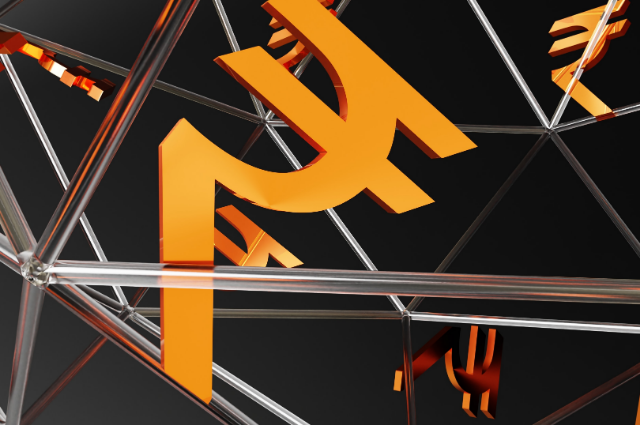
Photo by Aakash Dhage on Unsplash
“Digital India means fast profit, full profit; Digital India means minimum government, maximum governance”
India has made impressive progress toward handling digital payments. A separate law for Payment and Settlement Systems has been enacted, which has enabled an orderly development of the payment eco-system in the country. The present state-of-the-art payment systems that are affordable, accessible, convenient, efficient, safe, secure, and available 24x7x365 days a year are a matter of pride for the whole nation. India is far ahead of the most developed countries also in this area.
The Government of India announced the launch of the Digital Rupee — a Central Bank Digital Currency (CBDC) from FY 2022-23 onwards in the Union Budget placed in the Parliament on February 01, 2022. Digital money, or digital currency, is any form of money or payment that exists only in electronic form. Digital money lacks a tangible form such as a bill, check, or coin.
Reserve Bank of India broadly defines CBDC (Digital Rupee (e₹)) as the legal tender issued by a central bank in a digital form. It is akin to sovereign paper currency but takes a different form, exchangeable at par with the existing currency, and shall be accepted as a medium of payment, legal tender, and a safe store of value. CBDC is a digital or virtual currency but it is not comparable to the private virtual currencies that have mushroomed over the last decade. Private virtual currencies sit at substantial odds with the historical concept of money. They are not commodities or claims on commodities as they have no intrinsic value
The digital rupee will add resilience associated with innovation in the way payments are made. It will also boost innovation in the cross-border payment space, he said. The markets will develop more huge cases in time to come as per their specific requirement. CBDC will give the public the desired experience while ensuring consumer protection but avoiding damaging social and economic consequences.
Across the globe, more than 60 central banks have expressed interest in CBDC, with a few implementations already under pilot across both Retail and Wholesale categories, and many others are researching, testing, and/or launching their own CBDC framework. As of July 2022, there are 105 countries exploring CBDC, which covers 95% of the global Gross Domestic Product (GDP). 10 countries have launched a CBDC, the first of which was the Bahamian Sand Dollar in 2020, and the latest was Jamaica’s JAMDEX. Currently, 17 other countries, including major economies like China and South Korea, are in the pilot stage and preparing for possible launches. China was the first large economy to pilot a CBDC in April 2020 and it aims for widespread domestic use of the e-CNY by 2023. Increasingly, CBDCs are being seen as a promising invention and as the next step in the evolutionary progression of sovereign currency
CBDC could further enhance resilience in payments and provide core payment services outside of the commercial banking system. It can provide a new way to make payments and also diversify the range of payment options, particularly for e-commerce (where cash cannot be used, except for the Cash on Delivery (COD) option). The CBDC-based payment system is not expected to substitute other modes of existing payment options rather it will supplement by providing another payment avenue to the larger public. As has been the experience with many payment products, once CBDC is introduced, innovations around the product would only expand the choices available and healthy competition will help bring about both cost and time efficiencies.
Most payments in a modern economy are made with private money maintained by commercial banks, which are in the form of demand deposits and therefore liabilities of these banks. A key feature of bank deposits is that commercial banks guarantee convertibility on demand to central bank money at a fixed price, namely, at par, thereby maintaining the value of their money. Nevertheless, in a fractional reserve system, a commercial bank—even if solvent— may face a challenge to meet any sudden spurt in demand to convert substantial bank deposits to central bank money. A significant difference between central bank money and commercial bank money is that the central bank can meet its obligations using its own nonredeemable money, while the latter entails counterparty risk. Central Bank money is the only monetary asset in a domestic economy without credit and liquidity risk. Therefore, it is a preferred asset to settle payments in financial market infrastructures (see CPMI-IOSCO Principles for Financial Market Infrastructures (2012)).
Therefore, an e₹ would offer the public broad access to digital money free from credit risk and liquidity risk. As such, it could provide a safe foundation for private-sector innovations to meet current and future needs and demands for payment services. It shall also help in leveling the playing field in payment innovation for firms of all sizes. For some smaller firms, the costs and risks of issuing a safe and robust form of private tender may be prohibitive. A CBDC could overcome this barrier and allow private-sector innovators to focus on new access services, distribution methods, and related service offerings. Finally, a CBDC might generate new capabilities to meet the digital economy's evolving speed and efficiency requirements.
CBDC, the central bank digital currency, holds a lot of promises by way of ensuring transparency, and low cost of operation among other benefits, and the potential to expand the existing payment systems to address the needs of a wider category of users.
CBDC, across the world, is in conceptual, development, or at pilot stages. But, extensive stakeholder consultation along with iterative technology design must take place to develop a solution that meets the requirements. While the intent of CBDC and the expected benefits are well understood, it is important to identify innovative methods and compelling use cases that will make CBDC as attractive as cash if not more.
